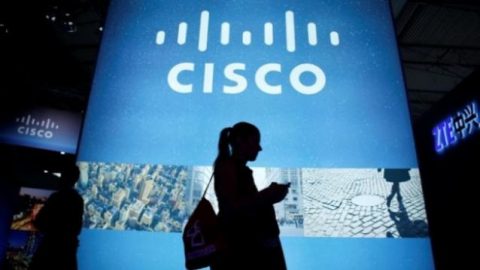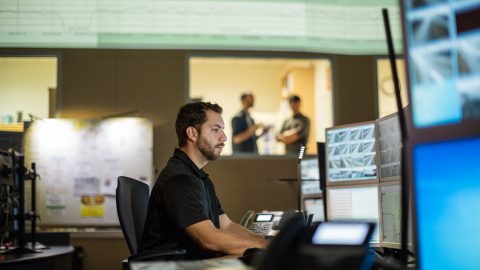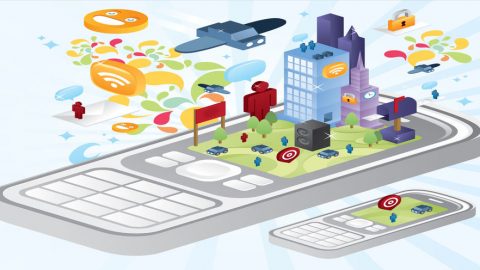The spirit of innovation with drones reaches grassroots levels. See how the disruption of the drone industry is pervasively happening within Cisco.
Biren Gandhi sees Cisco as the torchbearer of drone digital disruption.
The flying machines have become mainstream tools for everything from delivery services to video usage. So how can the networking giant—normally known for Internet services, solutions, software and hardware—compete in the unmanned aviation realm?
As the world narrows in on artificial intelligence, machines and virtual reality, Cisco too pushes to participate in innovative technology— and Gandhi is at the helm of this innovation, along with his Cisco “co-conspirators” Nico Darrow and Angelo Fienga. Known as “Cisco’s Drone Specialist” but more formally titled Distinguished Strategist, Gandhi speaks at conferences like InterDrone, XPONENTIAL, The Commercial UAV Show, etc. about how the company is moving forward with drone security, collaboration, and infrastructure.
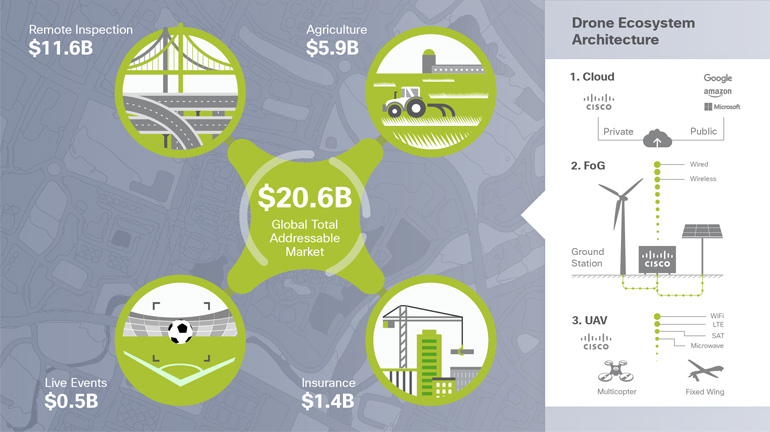
“There’s never been a better time for Cisco to invest in drones because the ecosystem is really big, it’s flourishing, it’s chaotic also to a certain degree, and it’s flooded with different kinds of privacy, security, and safety concerns,” says Gandhi, “The underlying network infrastructure that is needed to manage all of those things in a nice and clear environment to grow business opportunities—that does not exist and Cisco has a very big opportunity to participate in creating that environment and ecosystem.”
As drones become more and more available in the market, it is necessary for a reliable, robust and secure infrastructure to be in place so that we can speak to drones, and drones can speak to one another.
See also: The farm tech revolution
Cisco is able to drive digital disruption with drones in a few different ways. The first is by creating a horizontal platform that takes care of all end-to-end data.
Within this horizontal platform, one can create intelligent computing—or the ability to collect and manipulate data from various sensors on a drone. You could also have smart, secure communication between drones and the ground station that could stream data in real-time. Finally, Fog Computing processing stations can process data from the drones immediately and provide quick results.
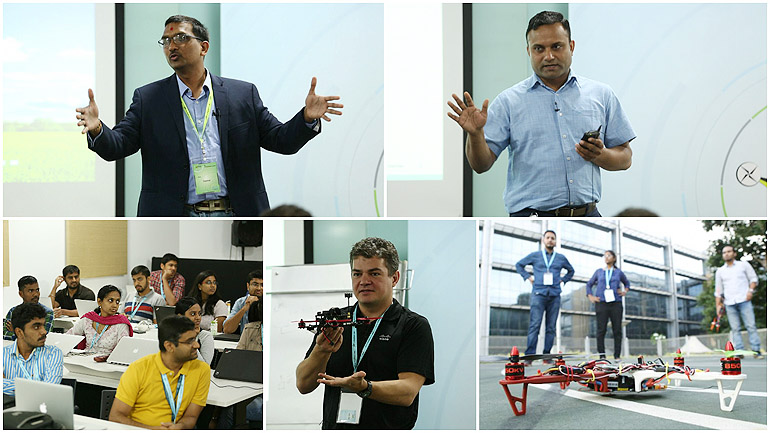
By being able to harvest intelligent processing of data on the drone first and later on the Fog nodes, it can drive tremendous data efficiency while minimizing the decision delays. Having an application-enabled, drone-agnostic data management platform to move data from drone to fog nodes and then to the cloud is crucial for broader adoption of the entire drone ecosystem.
Consider being able to gather weather data for farming. By collecting data real-time, farmers would be able to intelligently optimize their crop growing. Sensors on drones would also be able to monitor things like health, pests, and fertility.
Other use cases include having drones calculate the nature of magnetic rock structure for oil, gas, and mining purposes. Drones would also be able to aid in disaster relief and recovery by providing a bird’s eye view of incidents.
Drone Stars
This innovative spirit for reaching the new frontiers of drone digital disruption extends beyond leaders at Cisco like Gandhi and reaches the thousands of employees who also passionately feel the infinite possibilities in the drone ecosystem.
In August 2016, Cisco hosted its first-ever drone workshop called “Drone Stars” for employees in its Bangalore offices. This event was a joint production between the Corporate Strategic Innovation Group and thingQbator—Cisco’s internal maker lab.
See also: DIY drones spark innovation in India
Sixty seats for the hands-on workshop were sold out in just 30 seconds, proving the massive drone interest in the Cisco community.
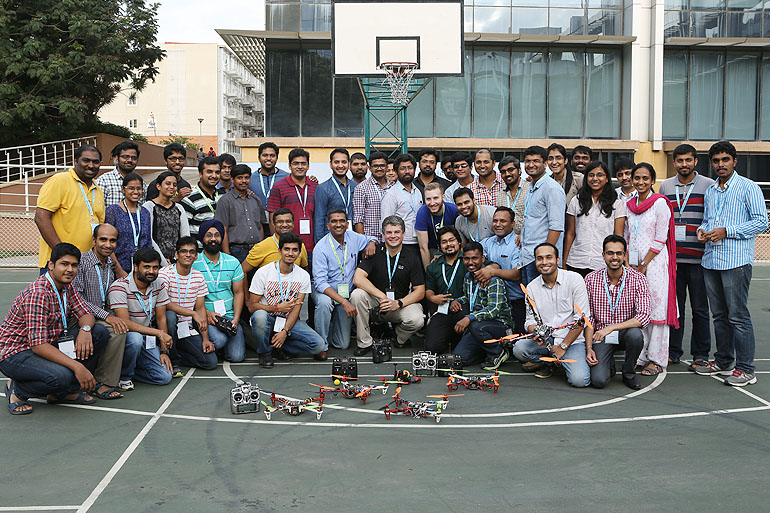
Drone Stars aided these employees to get drones from pieces to up in the air in just two hours. And while there were setbacks along the way, the Bangalore Cisco team proved their innovative spirit by pushing forward until some drones reached the sky.
Cisco is also looking towards the future when it comes to drone transformation. One outcome of the data-driven horizontal platform would be coming up with unmanned traffic management for drones. Another would entail providing safe and secure drone operations. Cisco is actively supporting the NASA UTM initiative while working with the FAA and other aviation agencies across the globe.
“It’s a tall order for the future, but this vision of the horizontal platform has the capability to take care of all those aspects as well,” says Gandhi.
As these aerial vehicles grow and soar through the skies, infrastructure innovation will continue to progress at Cisco. The entire community at Cisco is eager to unlock total digital disruption for drones.

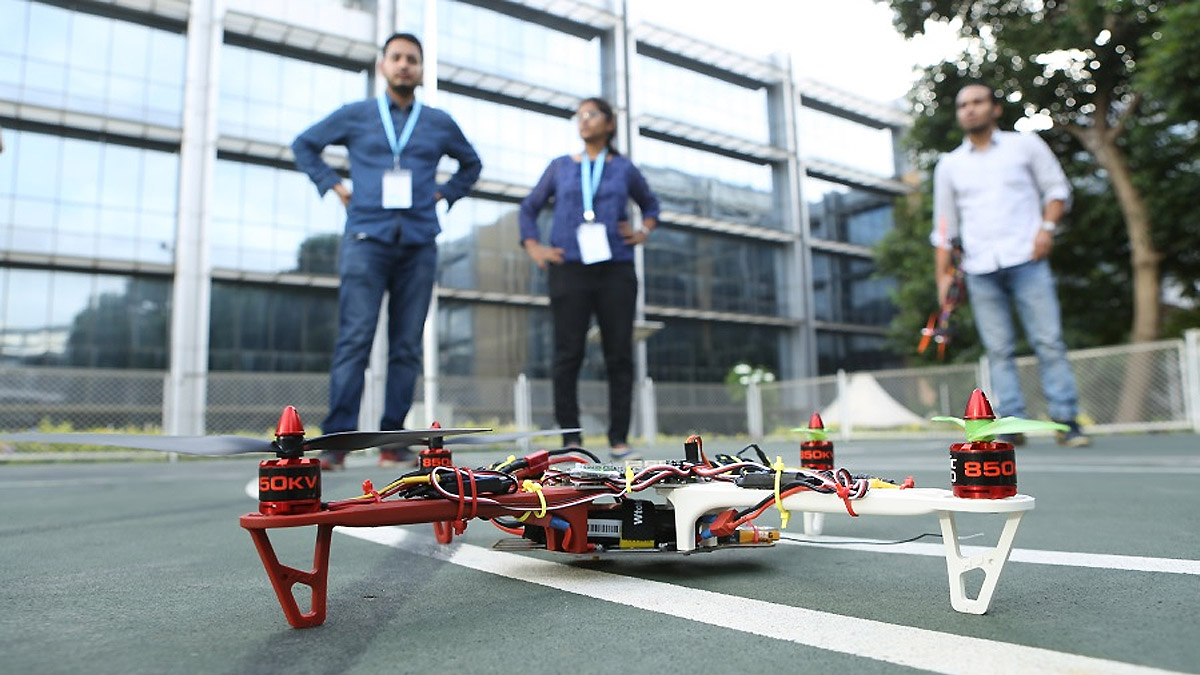
 By
By 